As Filmmakers, We Strive to Dissolve Borders
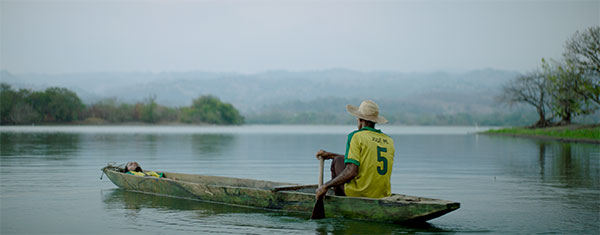
Yonca Talu
As Filmmakers, We Strive to Dissolve Borders
Interview with Nicolás Rincón Gille and Hector Ulloque Franco
BOGOTÁ-born, Brussels-based Nicolás Rincón Gille established himself as a confident new voice in Colombian cinema with his documentary trilogy Campo Hablado (The Spoken Countryside), centered upon female survivors of the Colombian armed conflict and consisting of En lo escondido (Those Waiting in the Dark, 2007), Los abrazos del río (The Embrace of the River, 2010), and Noche Herida (Wounded Night, 2015). The director continues to explore his nation’s painful recent history with Valley of Souls (2019), his award-winning venture into fiction filmmaking starring non-professional actors. Set in the war-torn region of Bolívar in 2002, the movie follows middle-aged fisherman José (Arley de Jesús Carvallido Lobo) in his perilous quest to find the bodies of his two sons, killed and thrown in the Magdalena River by paramilitary forces terrorizing the countryside. Punctuated by José’s encounters with generous women who console him and lend him a helping hand, Valley of Souls is a thought-provoking meditation on mourning and spirituality, and a heartfelt tribute to a community’s courage, resilience, and camaraderie in the face of extreme violence. It also stands as a testament to the country’s captivating landscapes, composed of wetlands, forests, and savannas, among other features, and captured in vivid detail and vibrant colors by cinematographer Juan Sarmiento G.
Valley of Souls distinguished itself with the Etoile d’Or for Best Film at the 18th Marrakech International Film Festival and the Special Mention of the Jury at the 42nd Festival des 3 Continents in Nantes. Following the film’s Parisian premiere in October, I caught up with Gille and the Paris-based Hector Ulloque Franco, who co-produced Valley of Souls, co-directed the documentary Meandros (Meanders, 2010) with Manuel Ruiz Montealegre, and is a co-founder and core faculty member of the Paris Institute for Critical Thinking (PICT).
Yonca Talu: Meandros and the Campo Hablado trilogy converge in their intimate and quotidian depiction of the Colombian conflict’s traumatic legacy. Was that shared sensibility what prompted your collaboration on Valley of Souls?
Nicolás Rincón Gille: Yes, we share an aesthetic and political commitment to what’s happening in our country. My second documentary, Los abrazos del río, and Meandros had their festival run the same year. I already knew Manuel [Ruiz Montealegre], but I met Hector during a spotlight on Colombian cinema in Montreal, and we’ve been close friends ever since. Hector and Manuel offered me their help as producers, and that’s how our collaboration on Valley of Souls came about.
Hector Ulloque Franco: Manuel and I quickly realized that we should be involved in Colombian cinema not just as directors but also as producers, by supporting other filmmakers’ projects. And I’ve always loved Nicolás’ movies, so it was an honor to work with him, even though it took me a while to convince him. [Laughs] We have in common a desire to blur the boundaries between documentary and fiction, and to stay connected to Latin America despite living abroad.
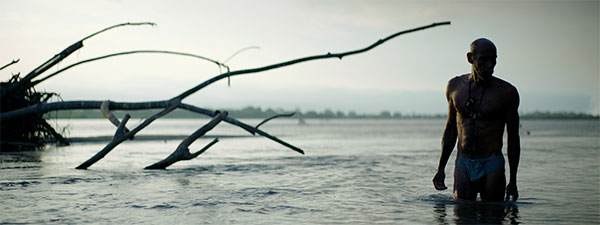
YT: Is being based in Europe an advantage for making films in Colombia?
HUF: Of course. It allowed us to develop a network and taught us how to pitch our projects to foreign investors, but it also influenced our approach to filmmaking. Although Colombian cinema has existed for a long time, it has only reached a certain maturity in the last 15 years. But Nicolás always had this maturity, which comes from his experience of living in Belgium and gives his work its depth, sensitivity, and poetry.
NRG: Thank you for the kind words, Hector. [They both laugh] While we miss Colombia, living in Europe has indeed been beneficial to us and shaped our understanding of cinema. As filmmakers, we strive to dissolve borders and tell stories that have an impact on audiences around the world.
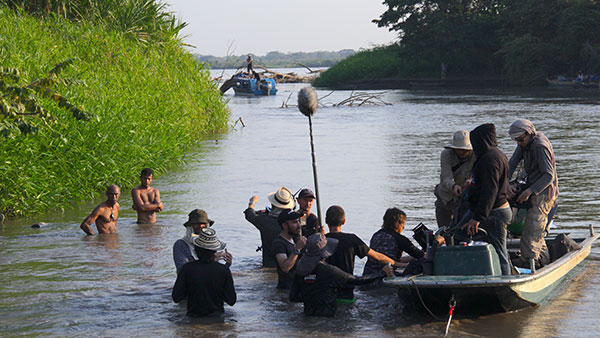
YT: In the opening sequence of Valley of Souls, the protagonist, José, and the younger fisherman who works alongside him light a cigar when their net gets tangled in the river. This culturally specific ritual is described in Los abrazos del río as an offering to a water deity called the Mohan, but its purpose remains a mystery in Valley of Souls. Why did you choose to begin the film this way?
NRG: Those who’ve seen Los abrazos del río understand the purpose of this ritual, but I didn’t want to explain it in Valley of Souls. I just wanted to create a sensation of strangeness and suggest that the characters are communicating with another, magical realm. The cigar smoke is discreet, and the scene plays out in a distant wide shot, which lends it a documentary feel. There are other enigmatic elements in the movie, like José’s songs to summon his sons’ spirits, but I aimed to maintain a realistic tone throughout, without ever slipping into fantasy.
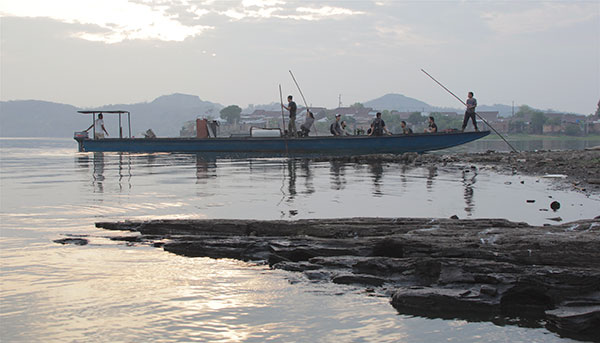
YT: During the discussion that followed the film’s screening in Paris, you mentioned that you spent two years in the region of Bolívar prior to the shoot. What did your preparation consist of?
NRG: It was really important for me to shoot Valley of Souls in a place that had lived through the conflict, but this was not an easy find. I had traveled along the Magdalena River and come across two locations that I liked, but then Hector and Manuel told me about Simití. I was drawn to the people and landscapes there, so I said: “Yes.” After that, we started filming interviews with the local peasants and fishermen, and I watched those videos and selected the people that I might be interested in working with as actors. Then I invited them back and asked them to do simple exercises, such as walking, sitting, and drinking a glass of water, to see which ones were natural and in the moment.
HUF: Nicolás, Manuel, and I try at all costs not to make a capitalist cinema, in which you arrive somewhere, grab images, and disappear. We develop a close relationship with the communities that we film, take care of them, and make sure we don’t leave behind any wounds. Valley of Souls, whose cast features many people from Nicolás’ documentaries, deeply reflects this sensibility, and it is not only a product of our two-year preparation but of Nicolás’ entire filmography.
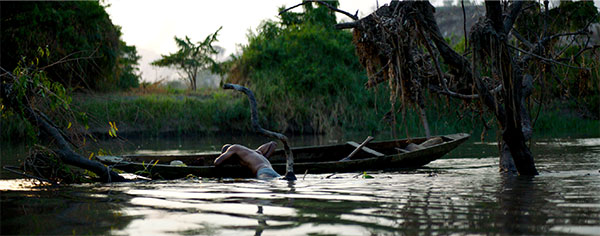
YT: There’s a powerful sentence in Los abrazos del río spoken in voice-over by María Isabel Espinoza, the woman who keeps a record of the corpses that float down the river. While describing her fascination with the landscape, she adds: “But all this beauty contrasts with the terrifying sight carried on these waters.” This idea of the coexistence of heaven and hell is central to the visual universe of Valley of Souls. How did you craft the film’s aesthetic with your cinematographer, Juan Sarmiento G.?
NRG: I shot all my documentaries myself, so I was initially reluctant to hand the camera over to a cinematographer. But then Hector found Juan, with whom I got along really well. The subject of mourning might conjure up gloomy images for Europeans, but we have a different tradition toward death in Latin America. That’s why Juan and I sought to capture the landscapes in all their beauty. We also used warm lighting in the cemetery in which José searches for his son Dionisio’s remains, to give the scene a welcoming look. The same is true of the representation of bodies washed up on the shore—I didn’t want to show rotting corpses but people asleep like children, without a mark of violence on them.
HUF: I must say that Nicolás is a very capricious director. [Laughs] No, no, I’m kidding, of course. Manuel and I respect Nicolás’ vision a lot, and one of the things I appreciated the most on Valley of Souls was that he sent the script to the entire crew, even the lighting technicians, so that everyone would know the story in depth and understand the aesthetic he was going for. Neither Nicolás, Manuel, nor I had worked with a team of over 30 people before, and we tried our best to create a familial and inclusive atmosphere on set. But we made Valley of Souls in very difficult conditions, in temperatures of over 40 degrees Celsius almost every day, and I still wonder how nature even allowed us to shoot José’s scenes in the river.
NRG: Yes, nature helped us in a truly magical way as soon as we realized that we had to honor it. And although Bolívar is a very rainy region, it didn’t rain a drop during the shoot, but it rained for three consecutive days after we wrapped.
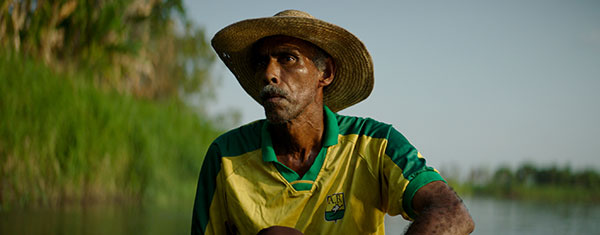
YT: Unlike the female subjects of your documentaries, José in Valley of Souls internalizes his emotions. What drew you to this type of male protagonist?
NRG: I tried to film men in my documentaries but never succeeded. Whereas women spoke out and confronted their pain, men fled or remained silent. I realized that this was because they were afraid of being victimized again—they had been prey to war and didn’t trust anyone anymore. So it only seemed natural to me that José wouldn’t communicate much, and when I met Arley [de Jesús Carvallido Lobo], a radiant man with a deep, clear-eyed gaze, I had a very strong intuition that he was the character. He stood out to me among hundreds of people who auditioned for the role, with his incredible truthfulness and ability to follow my instructions. But Arley is an evangelical and couldn’t play a character who smokes tobacco and drinks alcohol without his church’s approval, which fortunately came in a few weeks later. From then on, I worked with him like a professional actor, but he never read the script. I gave him a rundown of the story, and he had a notebook in which he wrote some lines of dialogue that got fine-tuned along the way.
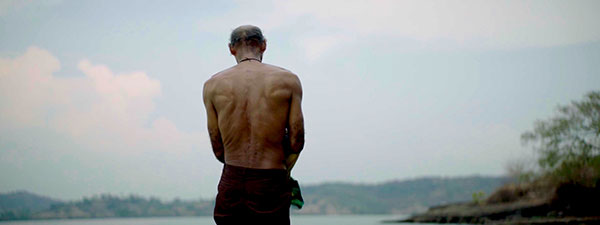
YT: What struck me about Arley was that he broke with a traditional image of masculinity despite having a very sculpted body.
NRG: That’s a beautiful observation. I never asked Arley to take his shirt off in rehearsals, so we were all open-mouthed with shock when we saw him bare-chested for the first time on set. [Laughs] He’s a 60-year-old man with a perfectly maintained body, and I let him walk and move at his own pace. But I also worked with acting coach Catalina Rodríguez to teach him and the other actors how to enter and leave a scene, and train them physically. A film shoot can be overwhelming, so I wanted to have someone on set who would welcome the actors, get them ready for their scenes, and help them recover smoothly afterward.
YT: While José seldom engages in conversations, we listen to him address the spirits of his dead sons throughout the film. Is this a fictional element or one embedded in Colombian culture?
NRG: It’s embedded in our culture. I attempted to capture the practice of communicating with spirits in a short documentary called Besos fríos [Cold Kisses, 2016], but I felt like I was invading a delicate private space. So I turned to fiction instead. For José, the dead have consciousness; this is not a religious belief but rather his way of being in the world—he acts as a bridge between the living and the dead. When we were applying for funding, Apichatpong Weerasethakul’s name often came up as a reference. I love his films, but I didn’t want to represent the spirits on screen in Valley of Souls. It was enough that we heard José speak with them, and I don’t think we ever doubt his sanity.
HUF: The importance of the spoken word and oral tradition in rural Colombia is a theme that runs through Nicolás’ work. Why attempt to represent the invisible when a character can invite you to look at it by the sole power of his speech?
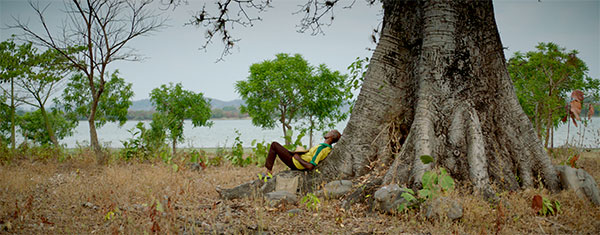
YT: Another character who brings up the subject of spirits is the fugitive paramilitary whom José saves from drowning. He delivers an agonized soliloquy in which he describes his and other paramilitaries’ experience of being visited by the souls of those they have killed. Why did you decide to explore his psychology?
NRG: I discovered during my research that the spirits of the dead can be a heavy load for their murderers, too. Those men make a deal with the devil, and they’re not all machines. But I needed to put some distance between us and them, so I hired professional actors for the roles of the fugitive and the paramilitary boss, whereas the young paramilitaries are played by local teenagers.
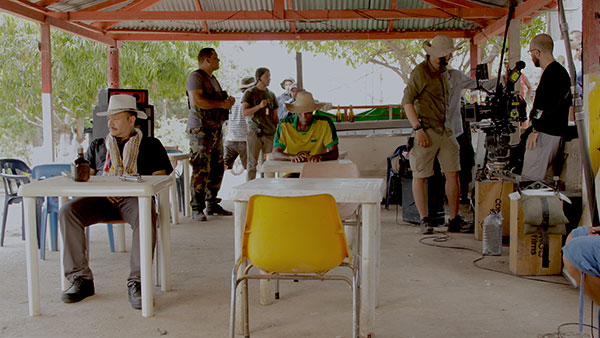
YT: José’s 15-minute confrontation with the paramilitary boss yields the movie’s most suspenseful moment, as José attempts to save his skin by bonding with his opponent over their shared passion for cycling. Was that a carefully scripted sequence?
NRG: It was. I knew that José had to encounter the embodiment of absolute evil at some point. But I wanted him to be a hidden devil, someone who pretends to befriend José as a method of torture. José is hungry, so the paramilitary boss offers him some soup and goes on to torture him by forcing him to eat another bowl, then another one, to the point of sickness. Carlos G. Vergara Montiel, who plays the paramilitary boss, was very familiar with his character’s attitude from having known a few paramilitaries in the past. As for cycling, it’s one of the most important sports in Colombia along with soccer—everyone follows it. So I thought it could be used as a way of bringing two opposite people together. But the scene wouldn’t have worked if the actors hadn’t taken their time—the tension had to build up as we witnessed José’s gradual suffocation. This sequence is like an Easter egg in the middle of the film, and viewers in favor of a more classical cinema often single it out to me.
HUF: I remember we almost shut down production during the filming of that scene due to a lack of budget. I was in Bogotá, while Manuel was on set, and we were both freaking out and texting each other: “What are we going to do? What are we going to do?” Talk about suspense! [Laughs] But we managed to raise enough money in one day, and we didn’t tell Nicolás so he could go on shooting. It was essential for us producers to protect our director and his vision.
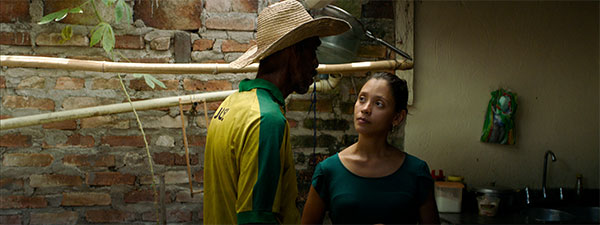
YT: Did Valley of Souls screen in Colombia?
NRG: It screened at the Cartagena Film Festival last March and was going to open in theaters across the country the following week, but it got postponed because of the pandemic. There’s a mural in Bogotá with the movie’s poster, but we didn’t specify the release year. [Laughs] The screening in Cartagena was very emotional, though—a cathartic experience full of crying, hugging, and sharing.
HUF: Valley of Souls is proof of the possibility of making a cinema that nurtures people—not only the cast and crew but also the audience. And we hope to continue doing the same with our next films, regardless of how ambitious they might be.
Translated from French by Yonca Talu.
YONCA TALU is a filmmaker and film critic living in Paris. She grew up in Istanbul and graduated from NYU Tisch and the École Normale Supérieure. She is a regular contributor to Film Comment magazine and Metrograph Journal.
dePICTions volume 1 (2021): Pandemic Times



Responses